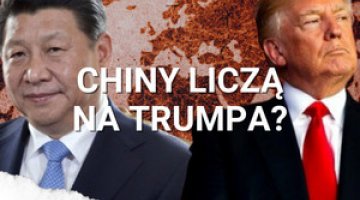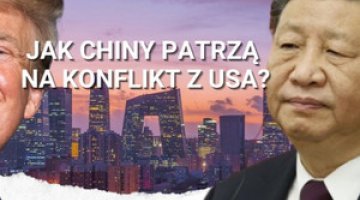Right of retaliation: the EU rolls out a tool to protect itself against economic blackmail
On 7 December, a Regulation of the European Parliament and of the Council on the protection of the Union and its member states from economic coercion by third countries (the Anti-Coercion Instrument, ACI) was published in the Official Journal of the EU. This procedure is designed to provide the EU with legal tools to respond to interference by third countries in the sovereign decisions of the EU or its members through the use or threat of economic measures. Such coercion can take various forms: the politically motivated imposition of additional customs duties, delays or refusals to issue permits to conduct economic activity, discriminatory border controls, government-organised boycotts of goods or investors from a particular EU country, and others. Under this regulation, in such situations the EU will be able to respond by imposing restrictions on the imports and exports of goods and services, intellectual property rights and direct foreign investment in the EU, as well as curtailing access to public procurement and EU funding, including its research programmes. The EU may also demand compensation for damage caused by third countries. The regulation will come into force on 27 December.
The ACI’s main objective is deterrence. Equipped with these countermeasures, the EU should become less susceptible to interference in its policy-making through economic pressure. If, despite the adoption of this regulation, third countries attempt to exert pressure on the EU or one of its member states, the European Commission will first investigate whether economic coercion has indeed taken place. It will be able to launch an investigation either on its own initiative or based on information from other sources, such as a member state, the European Parliament, economic operators or trade unions. The European Council will ultimately decide by qualified majority vote whether economic coercion has occurred. If it finds evidence of economic blackmail, the EU will first seek to resolve its dispute with the third country concerned through dialogue. If this fails, the European Commission will choose the means of response, though member states will also be involved.
Commentary
- While the official narrative says that this instrument of protection against economic coercion is not targeted at any country in particular, the Commission’s activity in this field stems from growing fears of renewed economic pressure from China, and indirectly, from the United States, should relations with it deteriorate. The idea of developing such a tool emerged in the EU in 2018 after the Trump administration imposed tariffs on European steel. However, it was not until 2021 that work on the ACI was stepped up as a result of China’s application of economic pressure against Lithuania in response to the opening of a representative office for Taiwan in Vilnius (see ‘A new phase of China’s pressure on Lithuania: weaponisation of European value chains’). At that time, the Chinese government tried to force European companies to sever their cooperation with Lithuanian suppliers by threatening to restrict these companies’ access to the Chinese market. It also removed Lithuania from import declaration forms, which made it formally impossible to sell Lithuanian products to China. In addition, customs clearance of goods with Lithuanian-made components was blocked, which created additional trade barriers for European business. The EU lacked adequate defensive tools in the face of this unprecedented attempt to influence the policy of an EU member state by economic blackmail. As a result, the EU referred this matter to the World Trade Organisation, though its proceedings are time-consuming and ineffective. Ultimately, the aggressive steps that China arbitrarily took against Lithuania led to the development of a broad consensus within the EU on the need to create its own legal framework which could ensure its economic security.
- Another indication that China is the primary target of the ACI is the timing of its official rollout: 7 December, the day of the EU-China summit, during which Ursula von der Leyen and Charles Michel met Xi Jinping and Li Qiang. The issue of restoring balance in the EU’s trade relations with China topped the event’s agenda. The EU made it clear to Beijing that if it does not change its stance on industrial policy and export subsidies, by means including redirecting its surplus production to the EU market and maintaining its asymmetric closure to European business, the EU will start to implement protectionist tools on a wider scale. Indeed, recent months in EU-China relations have been marked by the EU’s efforts to protect the single market from China’s unfair practices. In September, the European Commission launched an investigation on its own initiative (ex officio) into subsidies for Chinese-made electric vehicles. In November, following complaints from European business, it also launched two anti-dumping proceedings concerning imports from China of titanium dioxide (which is used in the cosmetics, dyes and food industries) and mobile access equipment, which is common in the construction, industrial and service sectors. Moreover, the EU has imposed anti-dumping duties on imports of high-tenacity polyester yarn, which is used in plastics, including plastic bottles. The EU is considering initiating further proceedings concerning areas such as photovoltaics, wind energy technology and metal alloys.
- The EU’s recent proceedings against China, mainly relating to electric cars, have been sharply criticised by the Chinese government, which has accused the EU of engaging in protectionism and violating international trade rules. China has sent several warning signals to Brussels: it has restricted exports of elements that are crucial for the EU’s energy transition, such as gallium, germanium and graphite, which are important for the photovoltaic sector and the production of batteries for electric cars. Beijing has also required Chinese exporters to report sales of rare earth metals to the ministry of commerce. The EU’s actions have thus raised the risk of economic retaliation from China, including through economic coercion; the ACI’s rollout is expected to curb China’s ability to retaliate and increase the EU’s deterrence power vis-à-vis China.
- The work on the ACI has been surrounded by much controversy, not least in the area of balancing the prerogatives of the European Commission and the member states. The European Council’s central role in this procedure means that the use of this instrument will require a political decision in each case; that may reduce the chances that it will actually be applied, although these are still greater than in cases where unanimity is required. A qualified majority, that is the support of at least 15 member states representing at least 65% of the EU’s population, will be required in any vote on deploying the ACI. However, an internal consensus has been gradually crystallising within the EU on the need to pursue an assertive policy towards China. In view of the disruptions to supply chains during the pandemic, the overhaul of the EU’s relationship with Russia following its invasion of Ukraine, and China’s increasingly assertive foreign policy, the EU has recognised the numerous risks to its own economic security arising from its overdependence on China.
- The ACI is the EU’s first-ever formal instrument designed to deter and protect against economic coercion by third countries. In the face of intensifying geopolitical rivalry, resolving disputes through existing methods such as diplomatic channels and the proceedings of the WTO has proved ineffective. Therefore, the ACI will be an important tool in the EU’s efforts to develop a new, assertive approach to defending its own economy. The objectives of this instrument are consistent with the European Economic Security Strategy that the European Commission unveiled last June. It calls for minimising threats to the European economies resulting from economic coercion, disruptions to supply chains and risks to technological security & critical infrastructure. The EU has been seeking to safeguard its long-term competitiveness by protecting key technologies (see ‘Technologiczny de-risking. Europejska lista technologii krytycznych’) and strengthening its deterrent measures against economic blackmail. Furthermore, in the field of foreign policy, it has been working to secure European companies’ access to critical raw materials through the Global Gateway, a programme of infrastructural investments (mainly in the Global South) which offers an alternative to China’s Belt and Road Initiative (see ‘On a new track? The Belt and Road Initiative after the forum in Beijing’).




